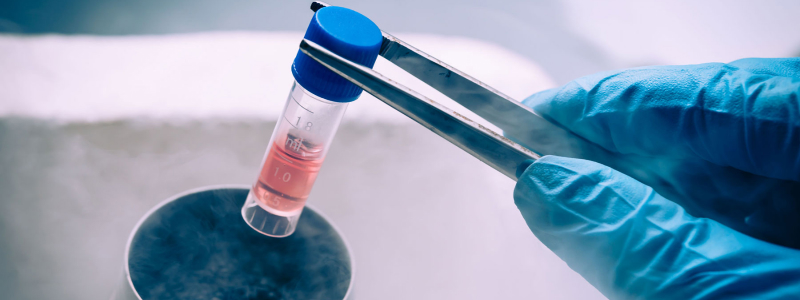
Our Treatments
The Frozen Embryo Transfer Program
Frozen embryo transfers have emerged as a new standard of care in IVF, resulting in higher pregnancy rates as compared to fresh embryo transfers, for certain patients.
This makes it imperative now for every IVF laboratory to have an excellent embryo freezing program as a necessary adjunct to their IVF program. SGRH IVF’s expertise as pioneers of embryo cryopreservation using Vitrification technology, now spans more than a decade. Our embryo freezing program is exceptionally reliable which guarantees embryo survival rates in excess of 95%. In simple words, when our embryologists’ vitrify an embryo, they do so with more than 95% confidence that the embryo will survive and be viable for transfer. The frozen embryo transfer program at Sir Ganga Ram Hospital, is a highly efficient and successful program with pregnancy rates in excess of 65% and live birth rates close to 50%. Please refer to the success rates section to find out more about the pregnancy rates after frozen embryo transfer.
When are embryos typically frozen?
Typically, after embryo transfer, any extra embryos remaining in culture, are frozen for future use. In case, the embryo transfer doesn’t result in a successful pregnancy, then the frozen embryos can be used in subsequent cycles to try for pregnancy without having to repeat the entire IVF cycle. More the number of frozen embryos, more the number of attempts that one can take from the same egg retrieval cycle. Not only is this the best way to optimize an IVF cycle, it is also a highly cost effective strategy since a frozen embryo transfer is performed at a fraction of a cost of an IVF cycle.
Embryos may also be frozen for couples when either the number of eggs retrieved is too high, or the endometrium is found to be too thin or too thick, both situations leading to a poor pregnancy rate. In such cases, it is advisable for all good embryos to be frozen and a frozen embryo transfer to be performed in the next cycle to increase the chances of pregnancy. Frozen embryos can also be used to have a second baby a few years later.
Why is it important to freeze embryos
- Frozen embryo transfer (FET) cycles result in a higher chance of pregnancy as compared to fresh embryo transfers. This is because in a FET cycle, the absence of any fertility drugs or injections lead to an improved receptivity of the uterus lining leading to a higher pregnancy rate.
- In cases where a limited chance of success is anticipated in a fresh cycle like having too many eggs, or high hormone levels or poor endometrium, cryopreservation of embryos followed by a frozen transfer cycle can work wonders for a couple.
At IVF SRGH, since we freeze embryos individually in multiple straws for a couple, not only does it give them multiple attempts at pregnancy, it also allows approximately 30 percent of our patients to come back and try for the second child a few years later, from the same set of embryos generated during the first IVF stimulation. This happens more often in young patients with good ovarian reserve as they may have enough frozen embryos from a single IVF stimulation.
Unfortunately, majority laboratories which have ordinary cryo-survival rates continue to freeze multiple embryos together, which is not an ideal situation. It suggests that survival rates of those labs are below par, and multiple embryos are frozen together to ensure that at least some embryos survive. You should know that all good labs have survival rates of more than 95% and rarely does an embryo undergo damage after freezing in good labs.
